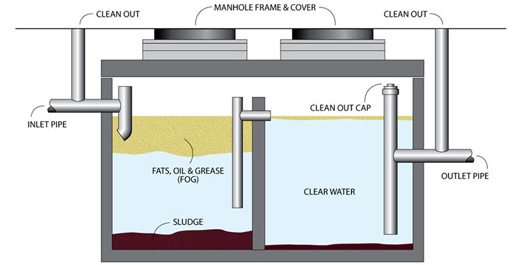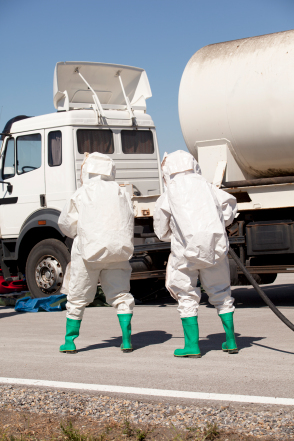Top Liquid Waste Disposal Melbourne: Trusted Services for Proper Waste Administration
Top Liquid Waste Disposal Melbourne: Trusted Services for Proper Waste Administration
Blog Article
Just How Liquid Waste Disposal Functions: A Detailed Introduction of Strategies and Technologies Used

Overview of Liquid Waste Kind
The intricacy of fluid waste kinds requires a detailed understanding of their features and effects for disposal. Liquid waste can broadly be classified into a number of kinds, consisting of commercial, community, farming, and contaminated materials. Each category shows distinctive residential or commercial properties, needing particular management methods to mitigate ecological and health dangers.
Industrial liquid waste originates from manufacturing processes and frequently contains a variety of pollutants, such as heavy metals, solvents, and natural substances. Municipal fluid waste, largely comprising wastewater from homes and industrial facilities, includes raw material, nutrients, and virus (industrial wastewater treatment). Agricultural liquid waste, including runoff from farms, might contain plant foods, pesticides, and animal waste, positioning threats to water top quality and ecosystems
Hazardous liquid waste is defined by its poisoning, sensitivity, or prospective to trigger harm. Understanding these varied fluid waste kinds is essential for establishing effective disposal approaches and making certain conformity with ecological regulations.
Physical Treatment Approaches

Testing is the first action, where bigger fragments and particles are removed from the liquid waste making use of screens or grates. This process shields downstream devices from damage and ensures smoother operation. Following screening, sedimentation utilizes gravitational pressure to different solids from liquids. In sedimentation storage tanks, heavier particles work out near the bottom, forming a sludge layer, while the clarified liquid can be further treated.
Filtration is another essential technique that involves passing the liquid through porous products, such as sand or membrane layers, to catch smaller particles. This step improves the quality of the fluid, making it suitable for subsequent therapy processes.

Chemical Therapy Methods
Chemical treatment methods are vital for properly handling fluid waste, particularly in attending to dissolved and colloidal contaminants that physical approaches may not adequately eliminate. These techniques utilize various chemical agents to neutralize, speed up, or change dangerous compounds right into less damaging forms.
One common technique is coagulation and flocculation, where chemicals such as alum or ferric chloride are contributed to promote the gathering of suspended particles. This procedure boosts sedimentation, enabling easier elimination of the resulting sludge. In addition, oxidation processes, utilizing agents like chlorine or ozone, are employed to damage down intricate organic substances and pathogens, providing the waste much safer for discharge or additional therapy.
Neutralization is one more important strategy, which adjusts the pH of acidic or alkaline waste streams to neutral degrees, preventing prospective harm to downstream systems and the atmosphere. Furthermore, advanced oxidation procedures (AOPs) use mixes of oxidants and ultraviolet light to degrade relentless pollutants, achieving a higher degree of treatment performance.
Biological Treatment Procedures
Biological therapy processes play a critical role in the administration of liquid waste by using microorganisms to decompose raw material and decrease contaminant levels. These procedures can be broadly categorized right into cardiovascular and anaerobic treatments, each using certain microbial areas to accomplish efficient waste deterioration.
Cardio treatment entails the use of oxygen to help with the break down of organic products by microorganisms. This procedure is frequently carried out in triggered sludge systems, where aeration tanks give a helpful atmosphere for microbial growth, bring about the oxidation of natural contaminants. The resultant biomass can be separated from treated effluent through sedimentation.
In comparison, anaerobic therapy happens in the absence of oxygen, counting on various microorganisms to damage down raw material. This method is specifically useful for high-strength waste, as it generates biogas, a renewable resource source, while minimizing sludge production. Technologies such as anaerobic digesters are regularly utilized in commercial and metropolitan applications.
Both anaerobic Find Out More and cardio biological treatments not only minimize the ecological influence of fluid waste yet likewise help with resource recovery, making them essential parts of sustainable waste administration methods. Their adaptability, efficiency, and effectiveness sustain their extensive execution across various markets.
Arising Technologies in Disposal
Ingenious methods to fluid waste disposal are quickly progressing, driven by improvements in modern technology and a boosting emphasis on sustainability. Among click here to read these emerging modern technologies, membrane layer bioreactors (MBRs) have acquired traction for their capacity to incorporate organic treatment with membrane filtration, leading to high-quality effluent that can be reused in different applications. MBRs make it possible for smaller sized impacts and extra efficient operations contrasted to standard systems.
An additional encouraging growth is the usage of anaerobic food digestion integrated with nutrient recovery technologies, which not only treats liquid waste yet also generates biogas and recovers valuable nutrients like nitrogen and phosphorus. This dual advantage boosts source efficiency and reduces environmental influence.
In addition, progressed oxidation procedures (AOPs) are being taken on for the destruction of intricate organic contaminants. These methods utilize effective oxidants and stimulants to damage down pollutants at the molecular level, offering a very reliable option for difficult waste streams.
Additionally, the combination of synthetic intelligence and artificial intelligence in waste administration systems is enhancing operational performance and anticipating maintenance, bring about minimized costs and enhanced ecological conformity. These innovations reflect a substantial shift in the direction of even more efficient and lasting fluid garbage disposal her explanation methods.
Conclusion
In verdict, efficient fluid waste disposal demands a comprehensive understanding of various methods and innovations. By continually progressing these methodologies, it ends up being feasible to deal with the expanding challenges associated with liquid waste, eventually adding to ecological protection and resource healing.
Fluid waste disposal is a crucial element of environmental administration, calling for a comprehensive understanding of different methods and innovations tailored to different waste types. Liquid waste can generally be classified right into numerous kinds, consisting of commercial, metropolitan, agricultural, and hazardous waste. Agricultural liquid waste, including drainage from ranches, might have fertilizers, chemicals, and pet waste, posturing threats to water top quality and ecological communities.
Numerous physical therapy approaches play an essential duty in taking care of fluid waste successfully - industrial wastewater treatment.In final thought, efficient liquid waste disposal necessitates a comprehensive understanding of numerous strategies and innovations
Report this page